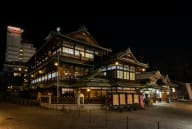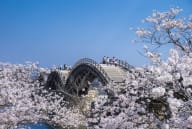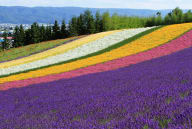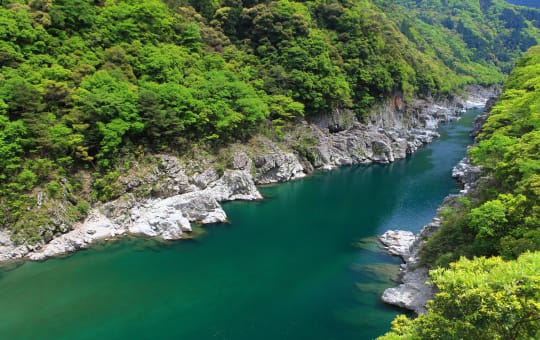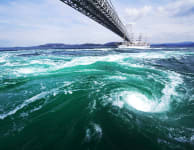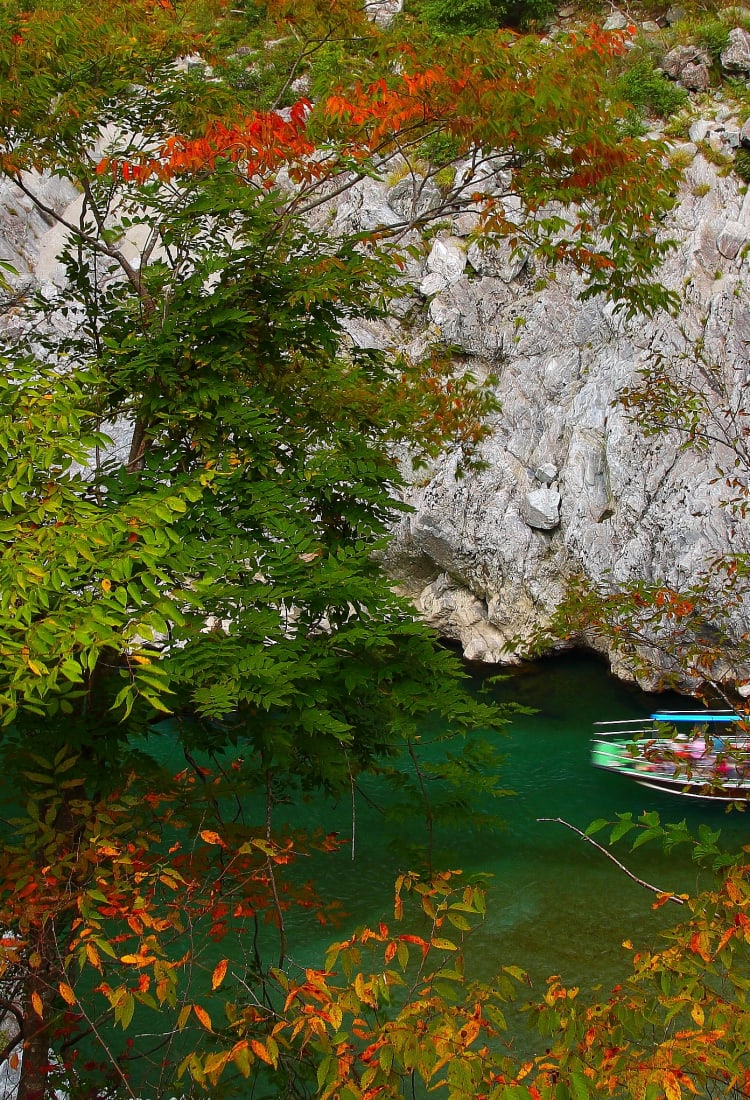

TOKUSHIMA Vallée d'Iya Les gorges les plus isolées et les plus spectaculaires du Japon
Les gorges les plus isolées et les plus spectaculaires du Japon
Nichée au cœur des montagnes de Shikoku, la vallée d'Iya est restée à l'écart des sentiers battus. Ceux qui font l'effort de s'y rendre sont accueillis par des paysages naturels intacts, des canyons encaissés, des ponts suspendus en liane tressée et des sources thermales relaxantes.
À ne pas manquer
- Les incroyables ponts en liane tressée qui figurent parmi les trois ponts les plus atypiques du Japon
- Les chaumières pittoresques du hameau d'Ochiai
- L'emblématique statue du garçon urinant surplombant la vallée
Comment s'y rendre
On peut accéder à la vallée d'Iya en prenant un vol depuis les aéroports de Haneda et de Narita à Tokyo jusqu'à l'aéroport de Takamatsu à Kagawa, puis une correspondance directe en bus à destination de la vallée.
Les grandes compagnies aériennes japonaises Japan Airlines (JAL) et All Nippon Airways (ANA) proposent des vols pour l'aéroport de Takamatsu au départ de l'aéroport de Haneda et la compagnie low-cost Jetstar assure des vols au départ de l'aéroport de Narita . Des autobus au départ de l'aéroport de Takamatsu desservent directement le sanctuaire de Kotohira et la vallée d'Iya.
Plusieurs bus relient la gare de Hankyu Umeda à Osaka et la gare routière d'Awa-Ikeda. Idéale pour les voyageurs disposant d'un budget réduit, cette option vous permet d'économiser 5000 yens, pour un trajet de quatre heures. Environ 5 bus par jour parcourent cet itinéraire. Prenez un bus local depuis la gare routière d'Awa-Ikeda jusqu'à la vallée d'Iya.
Un refuge de montagne
La vallée d'Iya est l'un des endroits les plus reculés du Japon. En raison de son inaccessibilité historique, les membres du clan Heike (Taira) s'y réfugièrent à la fin du XIIe siècle. À ce qu'on raconte, ils auraient fui jusqu'à la vallée d'Iya après s'être fait battre par le clan Genji (Minamoto) pendant la guerre de Genpei qui ouvrit la voie au premier gouvernement samouraï établi à Kamakura, près de Tokyo.
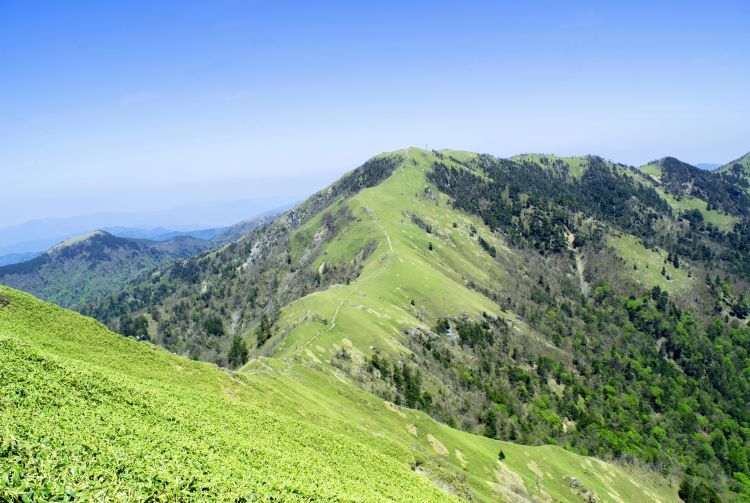
La source de la rivière Yoshino
La majestueuse rivière Yoshino, la plus grande voie d'eau de Tokushima, traverse la majeure partie de la préfecture d'ouest en est. En remontant la rivière, vous arriverez aux canyons Oboke et Koboke et à l'entrée de la vallée d'Iya. Cette région est peuplée de cerfs, de sangliers et de singes dans leur environnement naturel.
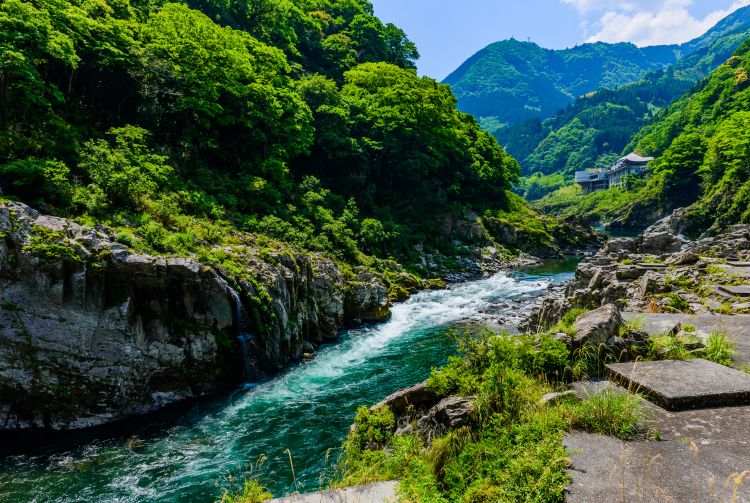
Sur le canyon Oboke, vous pourrez descendre tranquillement la rivière à bord d'un bateau de plaisance en admirant l'eau émeraude et les falaises rocheuses escarpées qui surplombent la gorge. Pour les plus aventuriers d'entre vous, plus en amont, le rafting en eau vive constitue un passe-temps prisé à la belle saison.
Les kazura-bashi (ponts de liane) d'Iya sont l'un des sites les plus remarquables de la région et figurent parmi les trois ponts les plus atypiques du Japon. Ces ponts suspendus étaient traditionnellement fabriqués en tressant ensemble des lianes récoltées dans les montagnes et constituaient pour les habitants de cette région montagneuse un moyen précieux de lutter contre l'isolement.
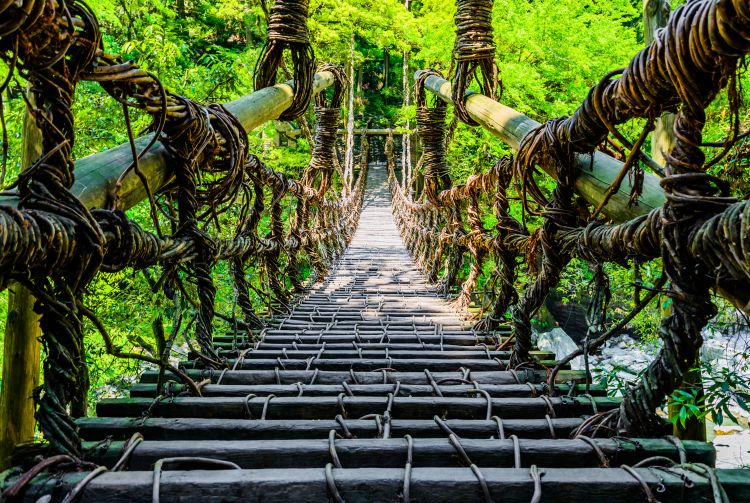
Selon une légende locale, ces ponts furent construits par les soldats Heike en déroute fuyant leurs poursuivants Genji. Le balancement du pont et la vue de l'eau sous vos pieds sont un gage de sensations fortes. L'un de ces ponts est situé dans le village de Nishi-Iyayama, tandis que deux autres se trouvent à Higashi-Iya, plus haut dans les montagnes, non loin du Mont Tsurugi , le deuxième point culminant de Shikoku.

Vous avez le vertige ?
Le garçon urinant de la gorge d'Iya est un autre emblème de la région d'Iya. Cette statue représente un petit garçon en train d'uriner debout au bord d'un précipice de 200 mètres de hauteur.
Connu sous le nom de Nana Magari (Sept courbes), ce lieu est considéré comme l'endroit le plus dangereux de la vallée d'Iya, et la légende du coin prétend que la statue du garçon urinant a été construite pour rendre hommage aux voyageurs qui venaient uriner depuis le rocher afin de montrer leur bravoure.
Fermes vieilles de 400 ans
Le village s'étend sur les pentes d'une montagne au centre de la vallée de l'Iya orientale. Étant bâti sur une pente raide, le dénivelé au sein du village est d'environ 390 mètres. Les vieilles maisons, les murs de pierre dressés un peu partout et les champs dessinent ce paysage original et chargé de mémoire typique d'un village de montagne japonais.
Prenez le temps de profiter
Les étroites routes de montagne ralentissent les déplacements. Prenez votre temps et appréciez le rythme de vie détendu qui règne ici. Plusieurs options s'offrent aux visiteurs qui souhaitent passer la nuit sur place. Vous trouverez plusieurs terrains de camping et une ferme restaurée vieille de 400 ans dans les parties supérieures de la vallée, tandis que les stations thermales d'Oboke et d'Iya offrent un excellent moyen de se détendre et de déguster la cuisine de la région.
Visitez les canyons Oboke et Koboke tout proches
Une visite de la vallée d'Iya peut facilement être combinée avec une sortie rafting, une croisière panoramique ou d'autres activités intéressantes dans la région voisine des canyons Oboke et Koboke .
















